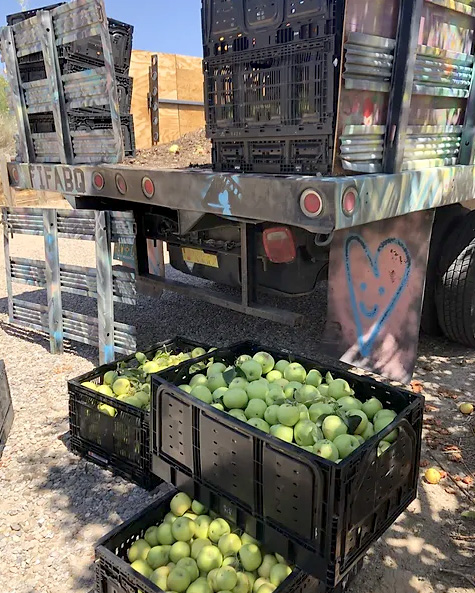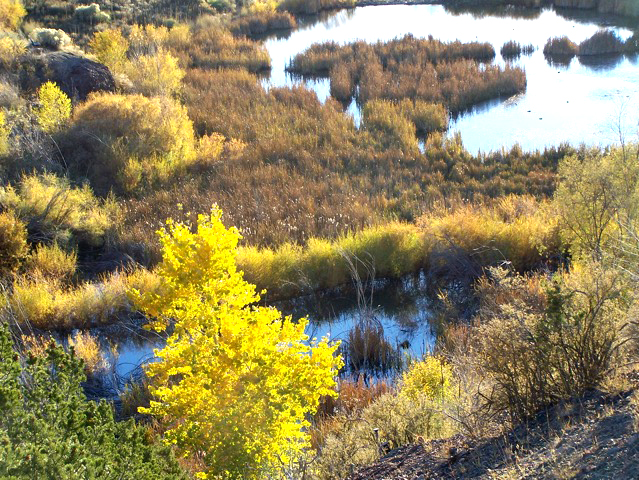By Donna Detweiler

Food Is Free Albuquerque (FIFABQ) is a “gleaning organization that supports social empowerment through the growing and sharing of fresh food.” The project began nine years ago when three women noticed fruit going to waste on private land in their community. Erin Garrison, Trista Alters, and Sam Henning asked neighbors if they could harvest with their children. From there, the opportunities grew beyond what the founders could gather themselves, and they enlisted other friends and volunteers to meet the demand for pickers and contacted food pantries about taking the extra fruit. By 2022 the harvest from private homes, farms, and orchards totaled over 100,000 pounds.
If a property owner would like to donate their fruits or vegetables through FIFABQ, they can
sign up on the website fifabq.org to either have volunteers do the picking or to harvest themselves and have FIFABQ pick up for distribution. A minimum of 50 pieces is expected. A lead harvester will call the site before the scheduled harvest to assess how many pickers will be needed and when the likely peak time for harvest will be. Volunteers are then told a meetup spot from which they will caravan to the actual address. This system protects the privacy of donors and prevents volunteers from jumping in ahead of the official harvest date. Pickers may take home some produce for personal use in exchange for their work.
The balance of the take is then offered to the organization that can best use it, based on the amount and ripeness of the produce. Recipient organizations include shelters, social service agencies, churches/synagogues, food pantries, and senior centers. Some fruit is better suited to jam, animal feed, or compost than to fresh eating, and crab apples, mulberries, and prickly pear are not harvested as part of FIFABQ.
Volunteer pickers register on the website, sign a liability waiver, provide their own transportation, and follow the leads’ instructions regarding ladders and other safety protocols. This year a grant has enabled FIFABQ to pay its lead harvesters.
Annual events sponsored by FIFABQ include a spring seed share, which this year involved 450 people and resulted in 8000 seeds distributed, some of which were donated by local nurseries. FIFABQ also maps the locations of produce trees in Albuquerque, has organized a used book giveaway and coat drive during the winter holidays, and built accessible gardens for persons with handicaps.
For more info, you can check out FIFABQ’s Facebook page or an interview with co-founder Erin Garrison by The Paper. at https://abq.news/stories/food-is-free-albuquerque,5929.


